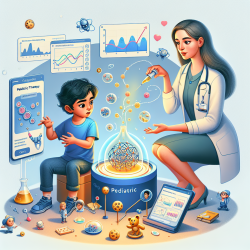Introduction
In the realm of pediatric therapy, especially in speech and language pathology, the integration of cutting-edge research into practice can significantly enhance outcomes for children. The recent study titled "Biomimetic post-capillary venule expansions for leukocyte adhesion studies" offers intriguing insights that, although primarily focused on leukocyte adhesion, can inspire innovative approaches in pediatric therapy.
Understanding the Research
The study presents a novel microfluidic platform that mimics physiological conditions to study leukocyte adhesion. This platform allows for multiple replicates and uses computer vision to analyze leukocyte adhesion probabilities. The findings highlight the importance of physical forces and molecular interactions in cell adhesion, with implications for understanding how cells interact with their environment.
Implications for Pediatric Therapy
While the study is grounded in biophysics and cellular biology, the principles of mimicking physiological conditions and leveraging technology for detailed analysis can be applied to pediatric therapy. Here’s how:
- Data-Driven Decisions: Just as the study uses data to understand leukocyte behavior, therapists can use data to track progress and tailor interventions for children.
- Technology Integration: The use of computer vision in the study parallels the potential for using technology in therapy sessions to monitor and adjust techniques in real-time.
- Environment Simulation: Creating therapy environments that closely mimic real-world scenarios can enhance the effectiveness of interventions, similar to how the study replicates physiological conditions.
Encouraging Further Research
The study encourages a deeper exploration of how physical and molecular dynamics influence behavior, which can be translated into understanding child development and learning processes. Practitioners are encouraged to delve into interdisciplinary research, drawing connections between fields to innovate therapy approaches.
Conclusion
Integrating insights from diverse fields like biophysics into pediatric therapy can lead to breakthroughs in how we support children's development. By embracing data-driven and technology-enhanced methods, we can offer more personalized and effective therapy solutions.
To read the original research paper, please follow this link: Biomimetic post-capillary venule expansions for leukocyte adhesion studies.










